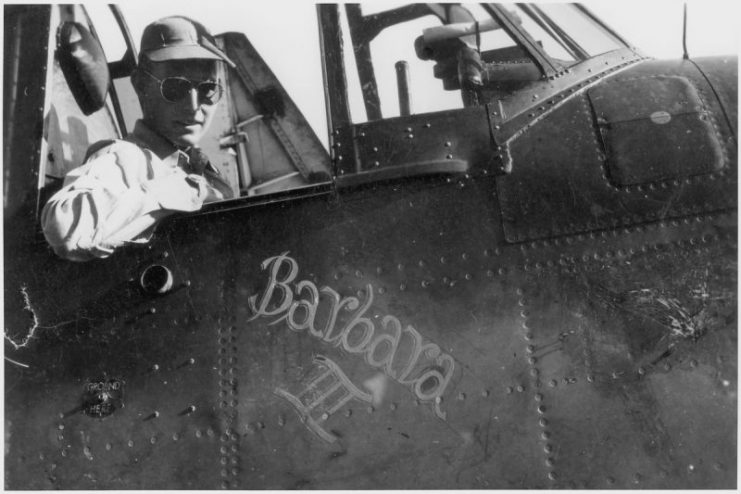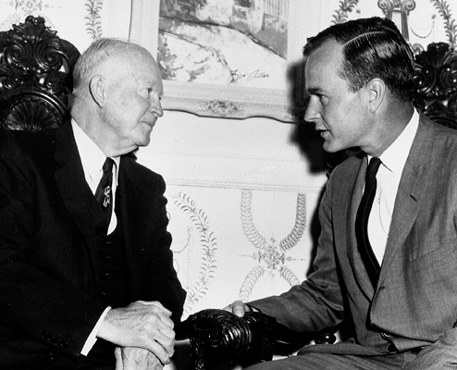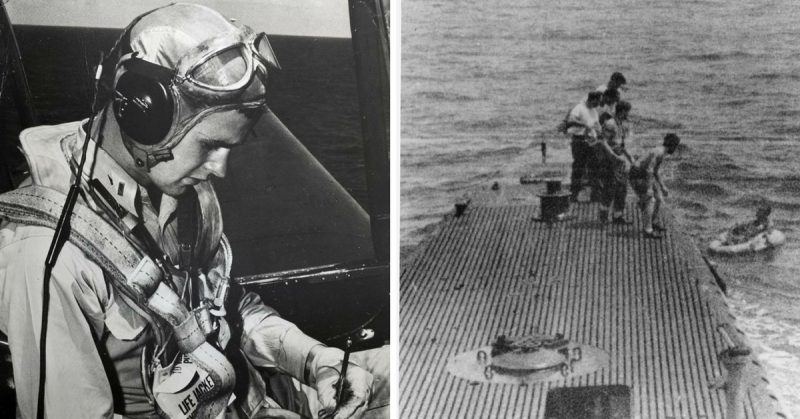From George Washington through Theodore Roosevelt up to George W. Bush, many US Presidents were also army veterans. This trait is not to be neglected, as many of them carved their leadership skills on the battlefield, which made them trustworthy and built their characters.
Every one of the presidents who served as part of the United States Armed Forces, at one point or another in history, have a story worth being told. The adventures of George Bush Senior in the Pacific, which have recently been fully revealed, have come to our attention for they are both incredible and bizarre.
It is widely known that the 41st President of the US was a Naval Aviator. He flew sorties in the Pacific theatre during WWII in a Grumman TBM Avenger torpedo bomber, while stationed on the USS San Jacinto aircraft carrier.
What has just recently been revealed is the full account of one particular mission from which he luckily got out alive. However, luck ran out for the others who participated in the unfortunate raid.
During one of the missions Bush flew over Chichi Jima – a tiny island in the Pacific – a squadron of torpedo bombers was met by heavy flak fire. Bush’s aircraft caught fire, but he was able to drop his bomb-load, before being forced to abandon the plane.

Another nine flyboys were shot down and managed to escape their airplanes. In an interview Bush Senior gave to the US Naval Institute, he remembered the exhilaration of jumping out of an airplane headed for the ocean:
“It was when I saw the flame along the wing there that I said, ‘I better get out of here’. I told the crewmen to get out. I dove out onto the wing. I hit my head on the tail, a glancing blow, and bleeding like a stuck pig.”
During the jump, a crewmember’s parachute failed to open, leading him to his death. As for Bush and the other member of the Avenger crew ― they found a raft, on which they awaited rescue.
Bush recalls vomiting a lot and bleeding from his head wound while hallucinating due to exhaustion and heat. The hell on earth on the open sea lasted for four hours. During that time, friendly fighters flew above, to protect them from potential Japanese boats or submarines.
He described the size of his fear, ranging wide as the ocean that surrounded him:
“I was sick to my stomach. I was scared. If somebody didn’t pick me up, I would have been captured and killed. They were very brutal on Chichi Jima.”
How brutal the Japanese forces were on Chichi Jima was revealed decades later, when the files of the war-crime trials on Guam were opened. The records show nine other aviators swam ashore on Chichi Jima. Apparently, they were captured by the Japanese and subsequently tortured and executed.

Some of them were beheaded, while others were stabbed to death by bayonets and sharpened bamboo sticks. But what strikes a civilized mind the most was the fact that after their death three of the captives met with an even more grim fate. The liver and flesh from Marve Mershon, Floyd Hall, and Jimmy Doe were removed and roasted and served as dinner for the Japanese officers.
Reportedly, the cannibal dinner was toasted with a glass of warm sake, under the blessing of Major Sueo Matoba and the commander-in-chief on the island, General Yoshio Tachibana. Both men were executed for war crimes after the capitulation of Japan.
As for Bush and his companion ― they were rescued by a lifeguard submarine, the USS Finback. After seeing friendly faces on the emerging sub, the would-be President uttered just four words ― each for one hour spent in delirium ― to show his tremendous gratitude:
“Happy to be aboard.”
He spent one month on the Finback and participated in other rescue missions, as part of the crew. Afterwards, Bush received the Distinguished Flying Cross, three Air Medals, and the Presidential Unit Citation awarded to the USS San Jacinto, on which he returned to serve after his ordeal was over.
George Bush Senior spent the rest of the war training pilots at the Norfolk Navy Base, before his honorable discharge in 1945.
